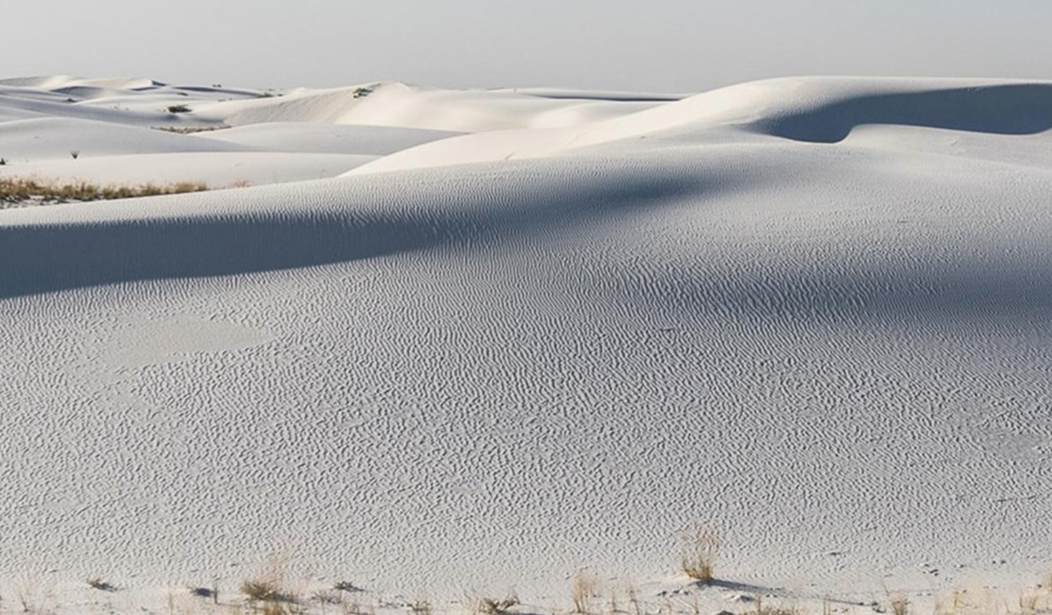Fossilized human footprints found in White Sands National Park in New Mexico have shocked anthropologists by dating to between 21,000 and 23,000 years ago — several thousand years earlier than humans were thought to have first lived in North America.
The migration of humans from Siberia to Alaska at a time of very low sea levels about 13,500 years ago across the Bering Sea land bridge was thought to be the earliest humans could have made it to North America. But these footprints predate the end of the last ice age during what’s known as the Last Glacial Maximum.
The timing and location of the prints in southwestern North America suggests that humans must have been on the continent much earlier than previously thought, [said Matthew Bennett, a professor and specialist in ancient footprints at Bournemouth University.] The people who made the footprints — mostly teenagers and children — were living in New Mexico at the height of the last Ice Age.
Between 19,000 and 26,000 years ago, a period known as the Last Glacial Maximum, two massive ice sheets covered the northern third of the continent and reached as far south as New York City, Cincinnati and Des Moines, Iowa. The ice and cold temperatures would have made a journey between Asia and Alaska impossible during that time, meaning the people who made the footprints likely arrived much earlier.
“It’s the first unequivocal site and a good data point that places people in the American southwest around the last glacial maximum,” Bennett said.
Anthropologists found 60 fossilized human footprints in New Mexico that date back 23,000 years.
The finding reveals humans occupied North America thousands of years earlier than we thought – and thrived on the continent during the last ice age. pic.twitter.com/u1qfJ9tQNd— ~𝓣𝓮𝓷𝓪𝓬𝓲𝓸𝓾𝓼 𝓣𝓮𝓪𝓱~ (@TeahCartel) September 23, 2021
It’s not likely that humans would have been able to traverse the ice sheets to reach New Mexico, so they must have been here before the ice made the trip impossible. That would put humans’ arrival in North America twice as early as previously estimated.
There are several other sites that have been found over the years that predate the magic 16,000-year marker, but those were previously rejected because of the lack of conclusive evidence and a decided prejudice against altering the consensus date.
Now, these other sites will have to be reexamined in light of this new discovery.
David Rachal, a geoarchaeology consultant who has worked with the human and animal trackways in the Tularosa Basin for eight years, said the footprint dates provided by Bennett and his team looked “extremely solid,” with seeds providing very reliable and precise ages through radiocarbon dating.
“Plus, these dates come from seed layers located above and below the trackway surface, which brackets the track-forming event. You could not ask for a better setup,” said Rachal, who was not involved in the study.
The one problem with the discovery is the lack of other artifacts — stone tools or flakes — that would indicate the presence of humans. But artifacts and bones are extremely rare and it’s not surprising there aren’t any to be found.
There is no more controversial scientific subject than human origins and human migration. Scientists stake their reputations and careers on one theory or another. But this find will no doubt change many minds about human origins in North America and open avenues of inquiry that didn’t exist before.










Join the conversation as a VIP Member